Clydesdales
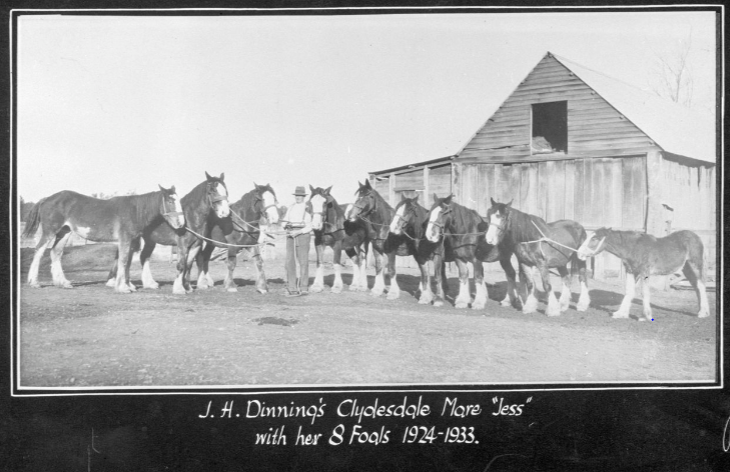
Background Breeds
Janet Lane on Waler Data Base @ Facebook. Image: State Library of Victoria.
Clydesdales. A founding breed of the Waler. The Clydesdale was the most popular draught breed in Australia. Plentiful photos in archives; used mostly breeder & show photos, as often any draught type with feather, inc. Shires, were called Clydesdales – it became a generic term.
When did they first come to Australia? Who knows – stud books were a mid to late 19th century phenomena – many arrived before studbooks started. ‘Young Clydesdale’, a black cart stallion, was standing in Sydney in 1824.
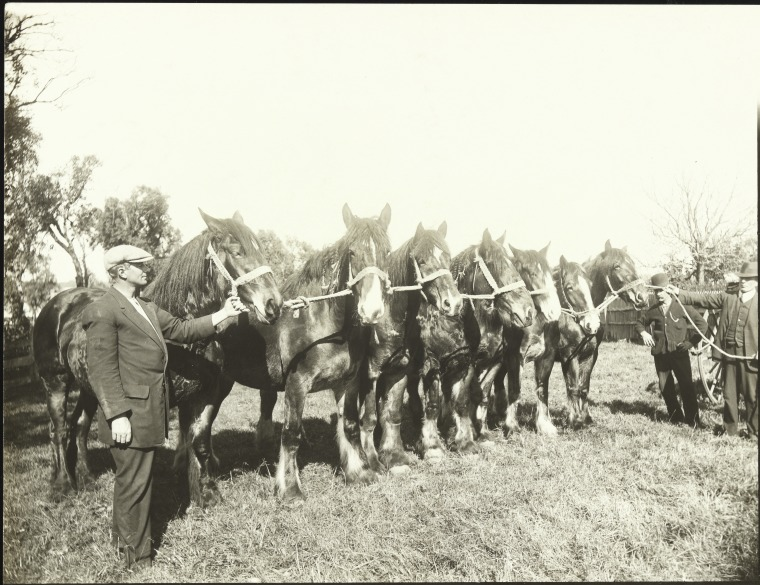
Scottish in origin. Australians were much taken with them and imported many; breeders such as the Weinholts on Maryvale stud, Qld, kept a studbook long before the UK started one. Countless Clydesdales were imported here from the 1850’s to every state. We soon had reputable breeders too.
The Australian breed body, The Commonwealth Clydesdale Horse Society (CCHS), started in 1918. It’s gone from strength to strength – and incredibly, in these days of disappearing livestock breeds, has, in the past two years, pulled the Clydesdale into safety from rare numbers – the breed was taken off the Rare Breeds Trust of Australia listing as ‘Endangered’ and put in ‘Recovering’ breeds in 2020. Well done all breeders and those who register their Clydie, a must to keep the breed alive. The CHHS is an example of how a good breed body is vital to saving a breed. Australia is a valuable insurance population – in the Clydesdale’s birthplace, the UK, they are listed ‘Vulnerable’ – rare indeed.
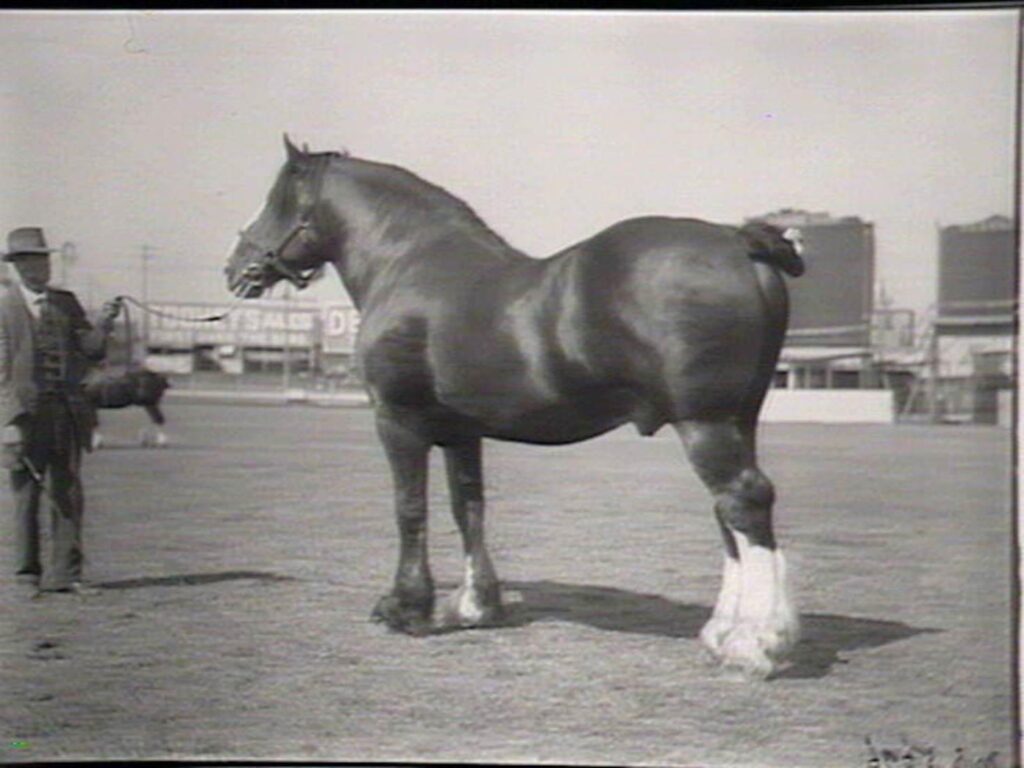
Image: Royal Warden, Clydesdale stallion, State Library NSW
Royal Warden was one of three Clydesdale stallion imported by the Agriculture Department of NSW in 1912. Scottish Commissioners here recommended changing our type of Clydesdale; thus one can see that before the breed body came about, a breed standard was lacking. No reflection on the breed at all, simply an observation and it happened to all breeds. And still does with some. At least the government and good breeders did the right thing back then.
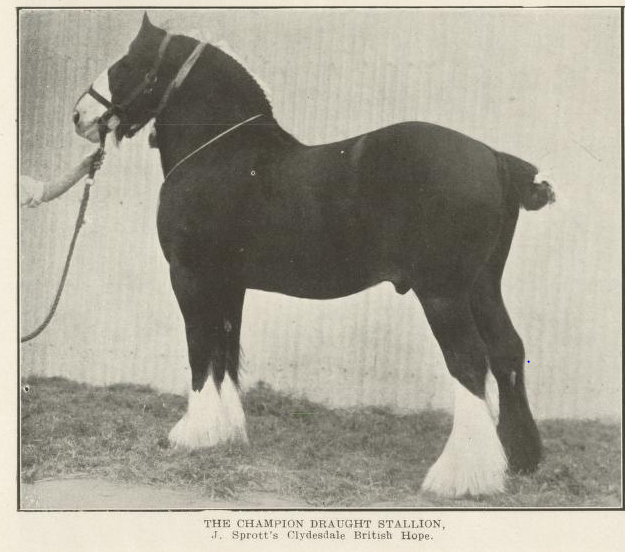
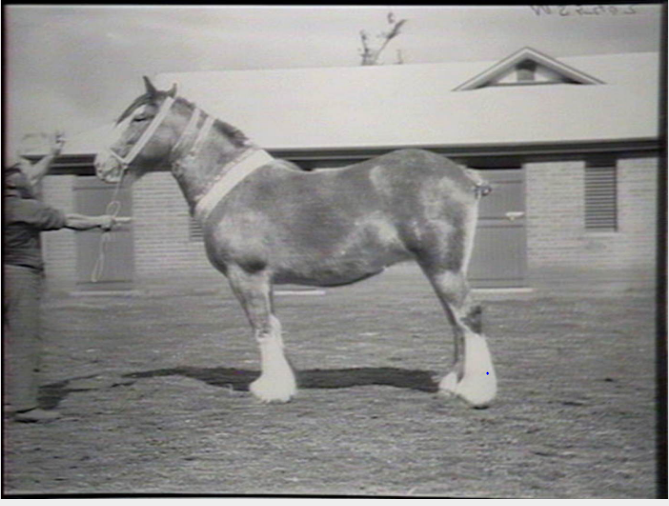
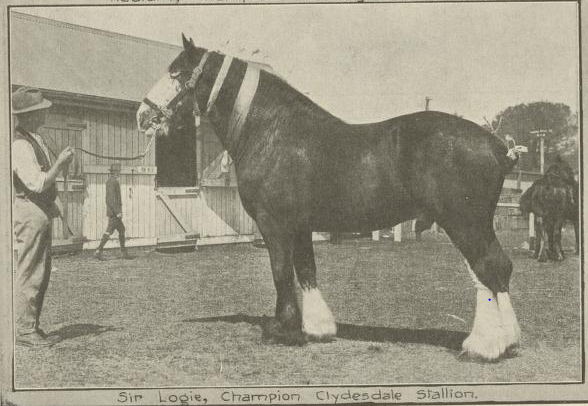
Country was big in Australia – we needed an active strong draught to pull loaded wagons over distances, massive ploughs over vast terrain, heavily loaded mine wagons, coaches over roadless tracts. Crossing the Clydesdale was popular, but they soon proved active enough and were bred by the hundreds of thousands. With any very popular breed, problems creep in. Often rectified here, and crossing out to other breeds was allowed originally, to keep the breed safe.
In the 1920’s and 1930’s era after the establishment of the CCHS, Australia had, arguably, the best Clydesdales in the world. We bred superlative specimens that did the hard work required of them with aplomb, kept their beautiful friendly, safe temperament, were free of most congenital faults with a reasonably hardy constitution. Usually with longer legs than Shires, more feather than Percherons and Suffolks (clean legged breeds), and more white markings than the other draughts.
Image: ‘Framed painting of Clydesdale ‘Liston Duke’, National Museum of Australia, collections.
Mr. Corrie S. Rodda imported this stallion in 1931, as a three year old. He was by Dunure Footprint out of Flower of Art, bred by James Hamilton of Scotland. His CSB number was 21.773.
The year he was imported, 1931, there were 195 Clydesdales in their classes at Royal Melbourne Show.
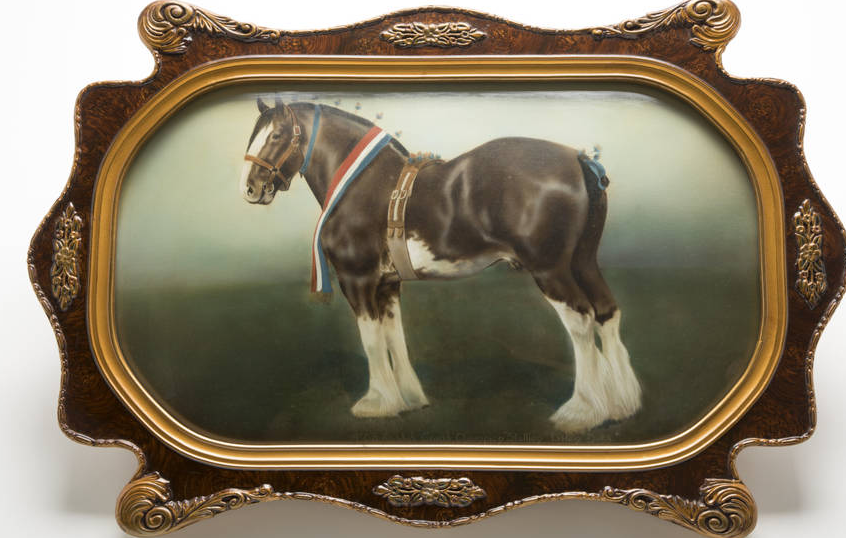
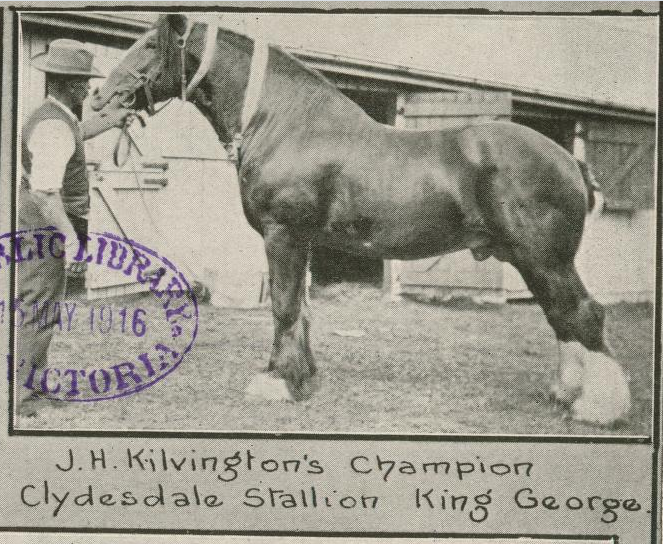
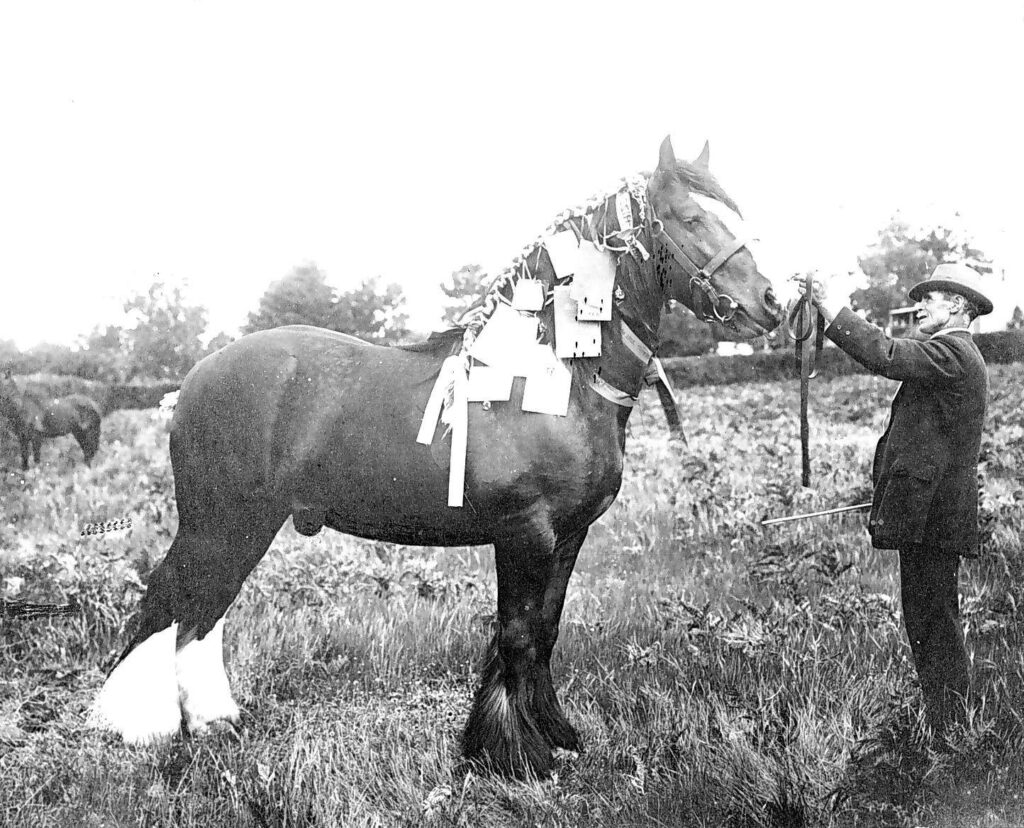

‘Corrie Rodda’s Clydesdales – left to right, ‘Overslade’, ‘Orange Blossom’, ‘Liston Duke’ and ‘Blossatannia’ – after their dominant performance at the 1933 Melbourne Royal Show.’
Their long friendly face with a blaze (or more) was easily seen anywhere. Looked for by children on milk and bread runs in the city, by the farmer in his paddock. The very showiness of their feather and markings made them popular for city delivery horses – and what child hasn’t been thrilled to bits to see the mighty Clydesdales at shows?
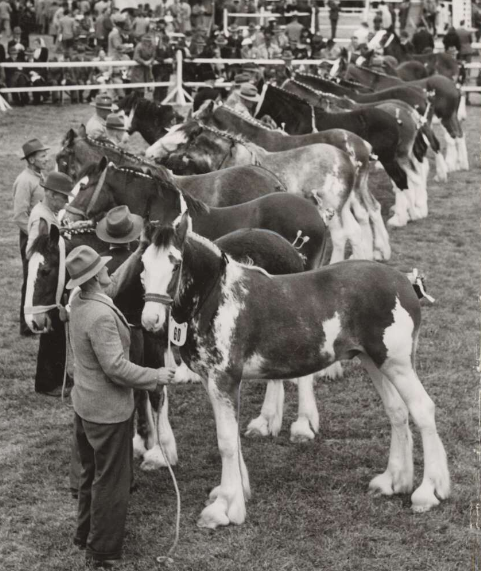
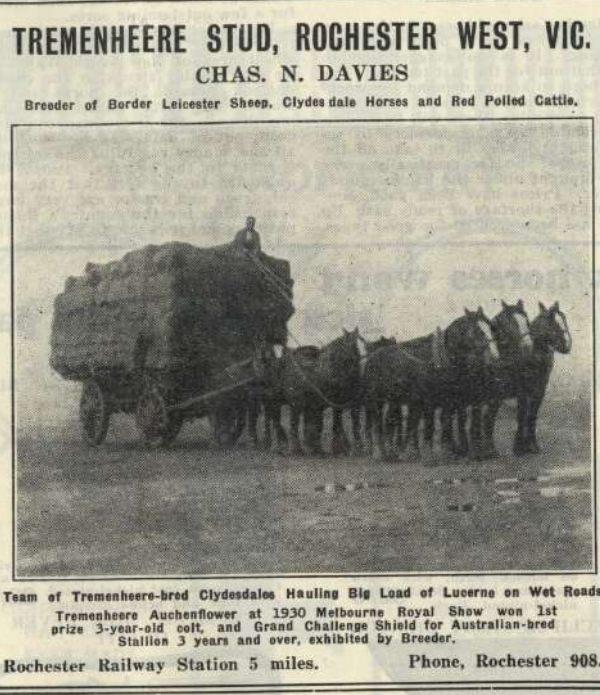
A tremendous founding breed of some of our heavier Walers (artillery types); a great breed that means so much to so many. Long live the Clydie!
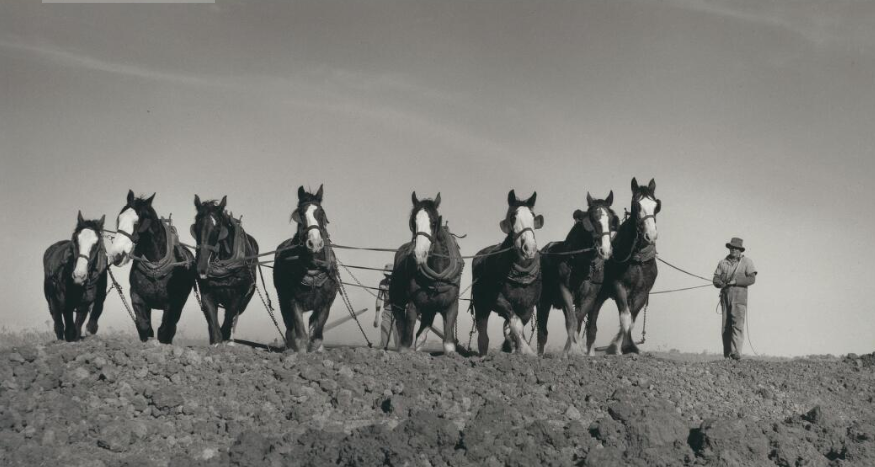
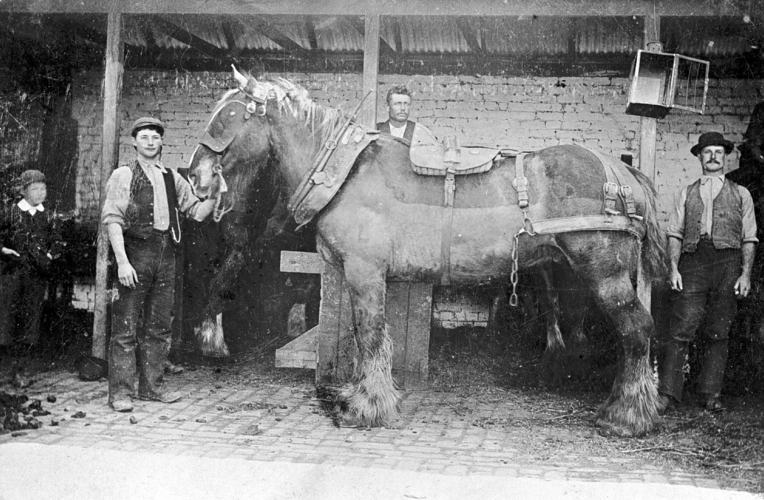
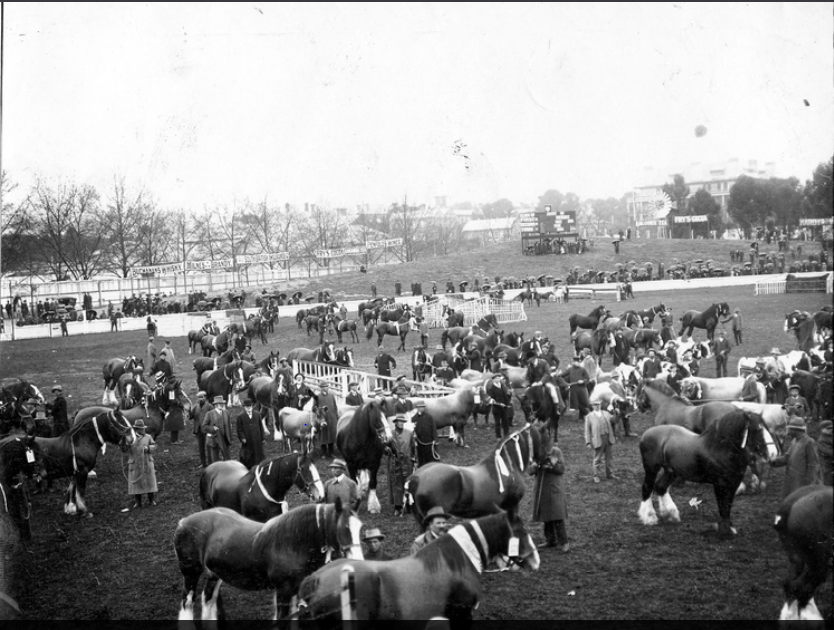
Images: ‘Clydesdale draught horse in the stables at ‘Gladstone Park’ Station Tullamarine, Victoria, circa 1900.’ State Library Vic; ‘Clydesdale horses being shown and waiting for judging on Jubilee Oval. 1907.’ State Library of S.A
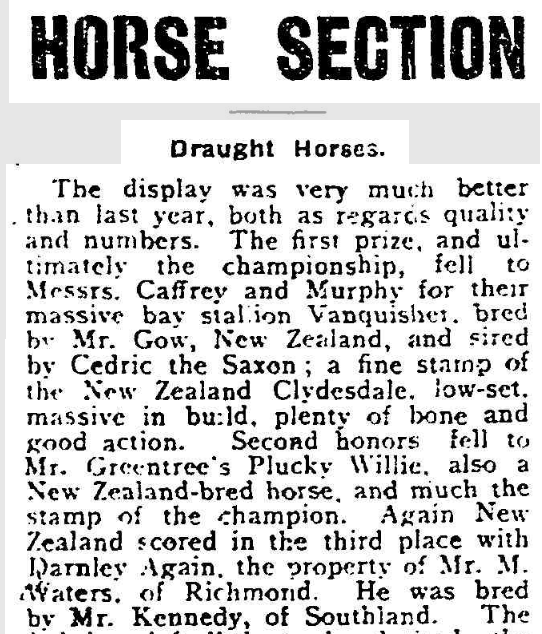
Chanced on 1908 Sydney Royal results and saw NZ bred horses won the first three Clydesdale placings.
New Zealand people can be proud of these stallions. The winner, named Vanquisher, was bred by a Mr. Gow. Fussed over in the press when he was imported here about 1908 by Caffrey and Murphy.
By Cedric the Saxon out of Kate by Wallace, Vanquisher lived up to his name – he cleaned up at both Sydney and Melbourne Royals of 1908 and 1909. 1908 was also said to be the first year that a Shire was showed at Sydney; an excellent imported stallion, Severn Marlow.
By 1909, Vanquisher, then 6 years old, was owned by Mr. James Mitchell of Victoria.
Images: Chronicle and North Coast Advertiser (Qld), 2nd May 1908; Sydney Mail and New South Wales Advertiser, Wednesday 29 April 1908
We had a big horse trade to New Zealand for decades from the 1850’s on, with several ships a week taking horses there; then a sudden break in the 1870’s due to politics. However by the 1890’s the trade went both ways. We all know about Carbine and Phar Lap, our heroes, bred in NZ.
Good limestone country – perfect for horse breeding – and a generous government policy where breeders could write the total price of a breeding horse off their tax in one year, meant their horse breeding flourished. We got some very good draughts from there, just before mechanisation pretty much ended things. And of course, a lot of good staying Thoroughbreds in horse breeding days.
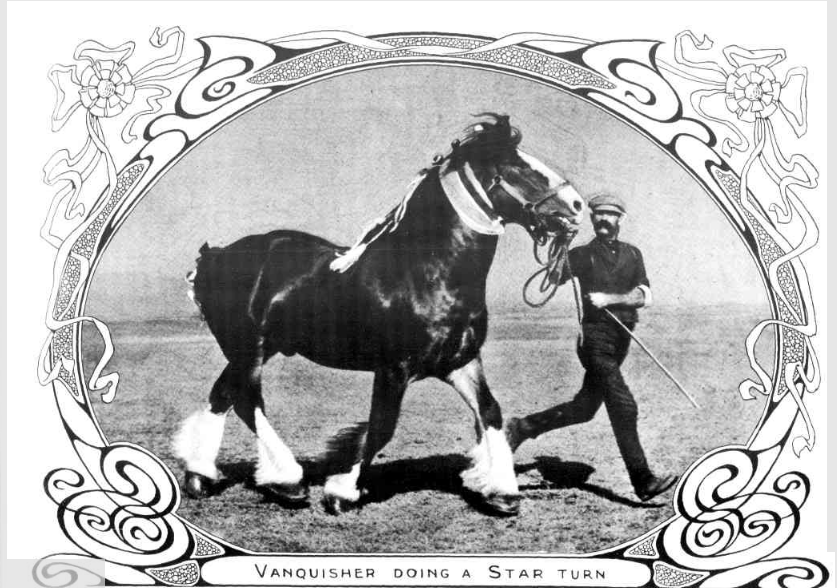
Images of Vanquisher below: Sydney Mail and New South Wales Advertiser, Wednesday 8 September 1909; The Australasian (Victoria), 25th April 1908
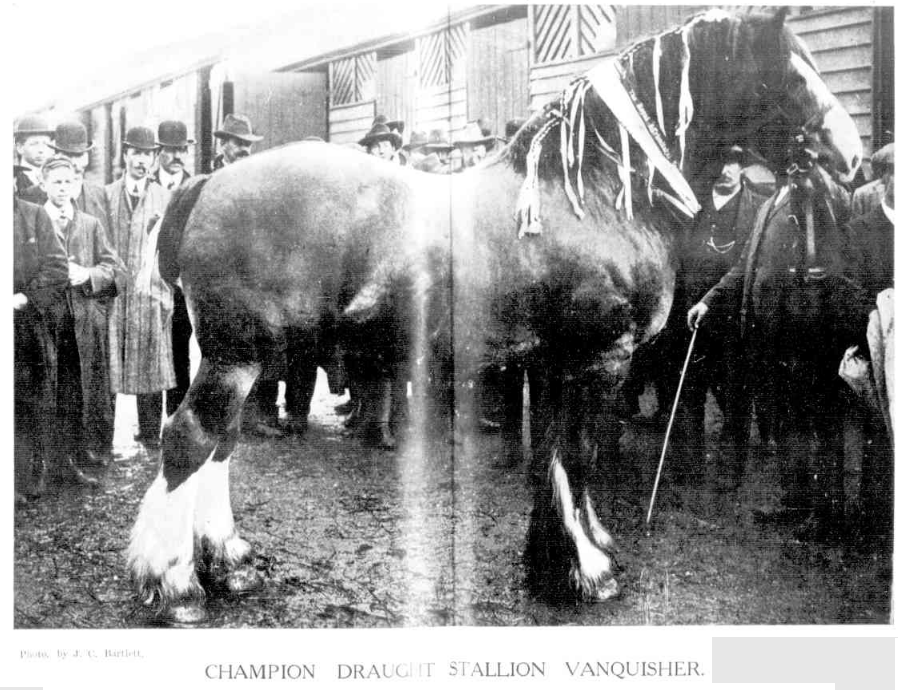
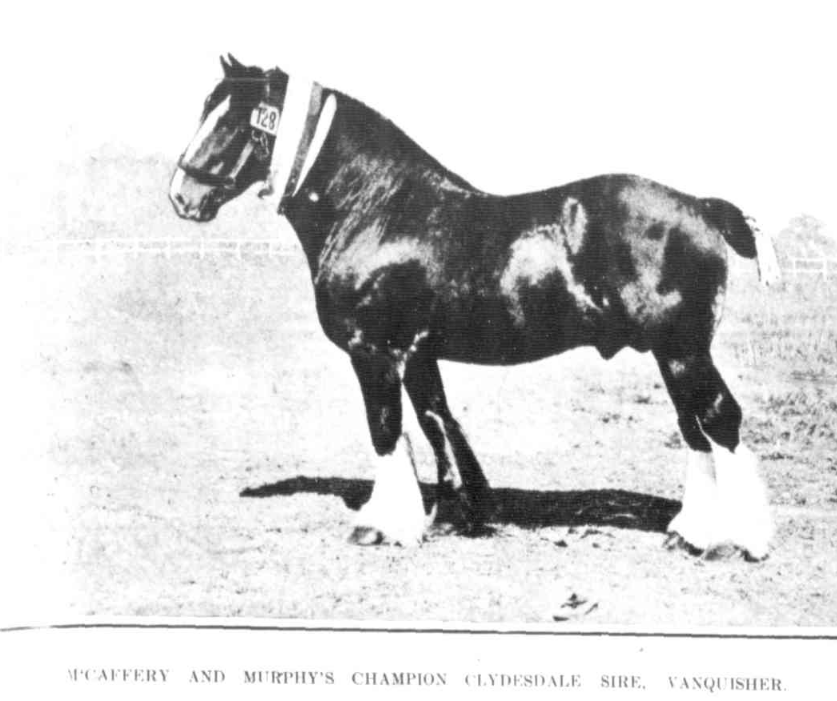
The success of Vanquisher and the other stallions imported here saw a rush of Victorian, NSW and Queensland breeders go to NZ for draughts, resulting in lot of good mares being bought and imported. Some in-depth descriptions of these mares, their conformation, bloodlines etc in the press, with much praise.
There was a little scandal – soon quashed – when Sid Kidman claimed two different horses were being showed as Vanquisher – Baron Sandy and Vanquisher. He had been mistaken. They were very similar in build and markings, but their bloodlines were different and both were correctly identified at shows.